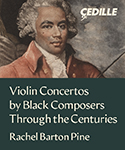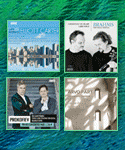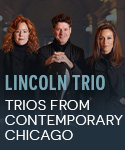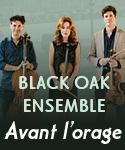If there never had been a Mozart, some other of his contemporaries certainly would be receiving more attention and respect from today’s performers and listeners. Joseph Eybler (1765-1846) is one of those–both Mozart and Haydn, as well as his teacher, Albrechtsberger, regarded him as one of the most gifted composers of his day. On evidence of these two substantial chamber works, Eybler’s music deserves to be performed and heard alongside that of his more illustrious colleagues. While stylistic similarities abound, especially to Haydn’s treatment of chamber strings, Eybler displays considerable inventiveness in scoring–the use of doublebass and cello, rather than two violas or two cellos in the quintet, for example–as well as in his melodic extensions, often surprising rhythms, and his choice of a six-movement structure. In the quintet, he employs the cello not so much in an upper-bass role as in a “lower-viola” capacity, giving it significant melodic material and often placing its lines in a register that makes it sound more like a viola than a cello. The lengthy Andante (8-plus minutes) is absolutely charming–richly colored, filled with lovely melodies and nifty felicities of scoring that always give the ear something to latch onto and follow–a line, a rhythm, a phrase–until the next interesting idea comes along to take you in another direction.
Only in the Minuet and Trios do we detect patches of pedestrian work in some routinely constructed melodic/harmonic material–but these are momentary lapses, and even here the music remains very appealing. In fact, even here Eybler effectively uses subtle rhythmic shifts to keep the minuet cleverly off-balance and then fully engages our dance instincts with swirling melodic material in a graceful three-step that feels more like a waltz than a minuet. The Finale is sheer joy, entertaining us with Haydn-esque horn calls, false endings, and sudden yet brief mood shifts, propelled with more striking rhythms and affecting melodies, all joined with real dramatic flair. And it’s performed with consummate proficiency and style that ensures a fully realized interpretation of this previously unrecorded work. And not only is the playing of the highest standard, but the balances are ideal, allowing us to hear both the active inner lines and to experience the full range of textures and colors offered by these instruments and Eybler’s masterful scoring.
The Trio is a worthy program companion here, not only for its contrast of texture but also for its sophisticated ensemble dialogue and virtuoso demands on the individual instruments. In this work Eybler seems closer to Beethoven than to Haydn–but whatever its associations, it makes great listening. And again, the performances are excellent. Chamber music fans tempted to pass on Eybler as being just a secondary voice among the great 18th-century Viennese composers should rethink their impression–and this disc will go a long way to help. [5/26/2005]
































